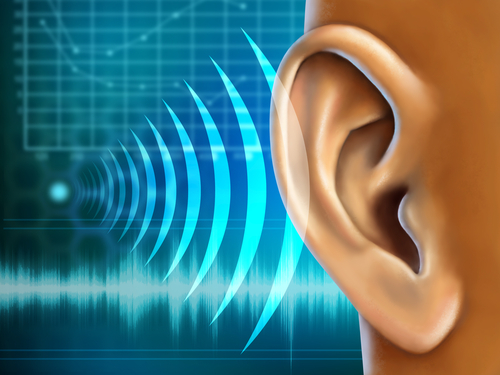[ted id=1564]
Architects design with their eyes rather than their ears — which means that spaces generally look great and sound terrible. At TEDGlobal 2012 University, sound consultant Julian Treasure warned that — even though we’re rarely conscious of sound — terrible acoustics can have very negative effects on our well-being.
“We’re designing environments that make us crazy,” says Treasure in this talk, which is a treat for the eardrums. “It’s not just our quality of life that suffers. It’s our health, our social behavior and our productivity as well.”
For example, Treasure notes that sound levels in hospitals have doubled in recent years. Sleep is absolutely crucial for patient recovery, and yet with the constant beeps, tones and shuffling, the body feels that it is under threat. Not to mention that staff errors increase the greater the level of distracting noise.
Classrooms generally have terrible soundscapes too. As Treasure explains, for a student sitting in the fourth row of a traditional classroom, speech intelligibility is just 50 percent, meaning that they only hear half of what their teacher says. And that doesn’t even count students with impaired hearing, or who are listening to a second language in the classroom.
To get a true picture of how disorienting poorly designed spaces can sound, watch Treasure’s talk. Below, check out tips from Treasure himself on improving sound in classrooms, hospitals, restaurants, offices and more.
Four steps to heavenly hearing…
1. Acoustics. Get these right in the first place and life is so much easier. Involve an acoustician at the planning stage: it costs far more to fix problems once the plan is a building. Even then, there are many solutions that can look great and massively help sound – for example absorbing panels that can now be printed with graphics or pictures.
2. Noise. Remove or damp down as many noise sources as possible, from chillier cabinets and air handling machinery to noisy floors and moving surfaces that clash, like steel chair legs on stone floors. Train your staff to listen for them all the time.
3. Sound system. Don’t value engineer this down to the cheapest components. If you are going to play sound, make sure its quality matches the quality of experience you want people to have in your space. Use a top pro-audio partner and listen to their advice.
4. Soundscape. Your soundscape should be ACE: appropriate for the function of the space, congruent with your values or brand, and effective in supporting the people in what they are doing, whether it’s eating, working or sleeping. Don’t play mindless music for the sake of it. Explore more creative, designed soundscapes. The best route is to start with silence and then decorate it, only adding sound where it adds value.
A great exercise is to tour your space with your eyes closed to feel what the sound is doing.
Now, some tips for specific environments…
For classrooms. Reverberation time (RT) is crucial: the Essex study in the UK that I mentioned in my talk has shown that reducing RT, especially at low frequencies, can improve speech intelligibility (SI) dramatically, benefiting both academic results and class behaviour. Use acousticians to model your planned or existing spaces and get RT down to under half a second across all frequencies. Measure and monitor your SI.
For hospitals. Make sure that needless noise is monitored and eliminated — no squeaks, banging doors etc. Issue soft-soled footwear if you can’t damp corridors in other ways. Train the staff in quiet working. Install relaxing soundscapes in waiting spaces. Check that there is privacy in areas where confidential conversations are taking place. Offer masking sounds for patients to help with sleep.
For restaurants. Don’t fall into the trap of accepting a design with all hard surfaces. If you must have a hard floor, make sure your chairs and tables (and waiters) have soft feet. Design zones with different RTs to vary liveness, and offer people options when seating them. Be careful of open plan kitchens: they pollute the space with a lot of noise. A glass wall can give the same visual effect without deadening the customers. Take the coffee and smoothie machines out of the customer space! Measure and monitor your sound pressure level when busy: anything over 75 dB is getting very uncomfortable.
For offices. Don’t fall into the trap of one size fits all. People need to do different things in offices, so create different soundscapes for them – from quiet working space, to open plan team working space, to social space and anything else you may need. Use natural masking sound rather than, or on top of, pink noise if your office is too quiet. Plan your setting so that noisy teams are away from quiet ones, with suitable dividers in between.

Comments (19)
Pingback: Hvorfor er hørelse og akustik så under prioriteret? - CIHA
Pingback: 10 советов от Джулиана Трежера, которые помогут нам строить офисы, больницы и школьные классы, благоприятные для наших ушей | TED RUS
Pingback: Tænk hvis samfundet belønnede lytte-arkitekter... ★ Tal til mig nu ★
Pingback: How Schools Boost Student Performance through Architectural Design - Getting Smart by Guest Author - design thinking, edchat, education, enviornment, learning | Getting Smart
Pingback: National DCS News – May 2013 | nhdcs.co.uk
Pingback: In Short: How you can review patent applications, and the uncertain future of book covers | T*H 매거진
Pingback: This #tedtalk nails it: Design your spaces for optimal sound performance. That’s so important ju… | Citylounge
Pingback: 10+ tips for designing classrooms, hospitals and offices that are kind on ears, from Julian Treasure « leanworkspace
Pingback: Acoustic Design « myjourneyintosound